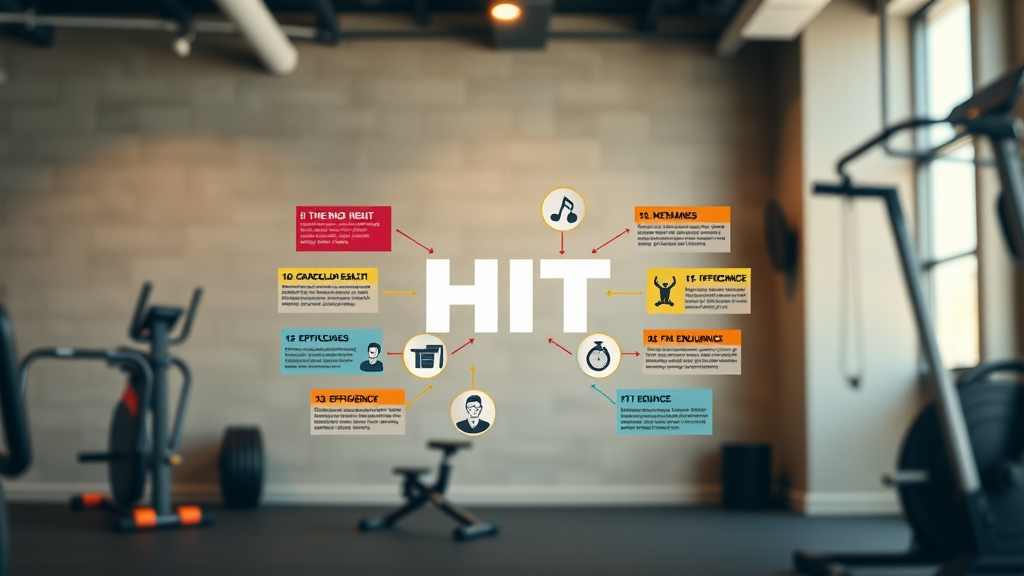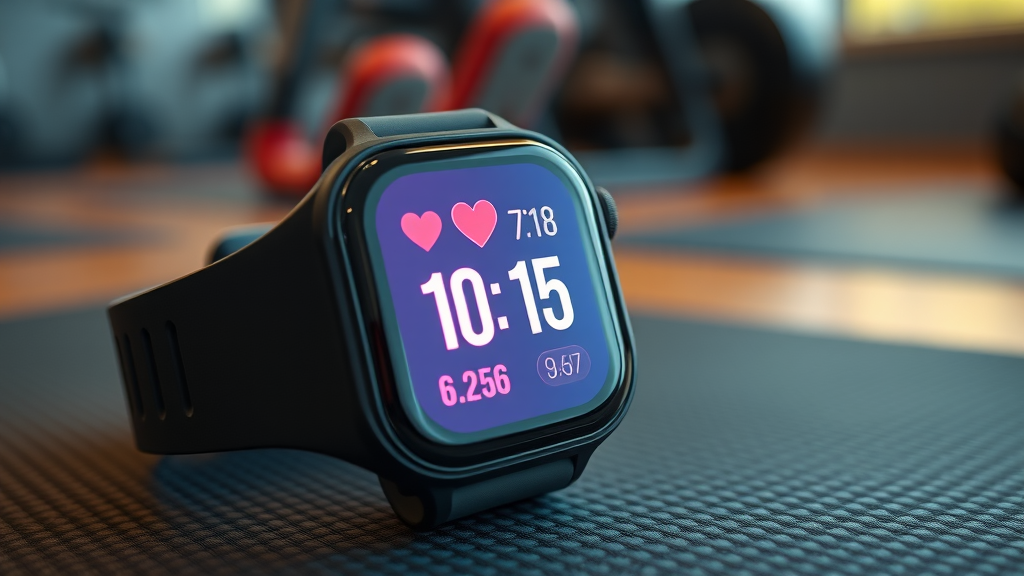Are you tired of endless workouts that yield minimal results? It’s time to discover the transformative power of High Intensity Interval Training (HIIT). In this article, we’ll dive into five game-changing secrets that can elevate your fitness routine, boost metabolism, and get you closer to your dream body in a fraction of the time. Whether you’re a gym newbie or a seasoned athlete, understanding these techniques will unlock a whole new level of efficiency and effectiveness in your training.
Understanding High Intensity Interval Training (HIIT)
What is High Intensity Interval Training?
High Intensity Interval Training (HIIT) is a form of exercise that alternates between short bursts of intense activity and periods of rest or lower-intensity exercise. This training method is designed to maximize calorie burn and improve cardiovascular fitness in a shorter period compared to traditional steady-state cardio.
The typical HIIT session can range from 15 to 30 minutes, making it an efficient workout option for busy individuals. The intervals usually last anywhere from 20 seconds to a few minutes, followed by equal or longer recovery periods.
Quick Facts About HIIT:
- Duration: 15-30 minutes
- Intensity: Short bursts of high effort (80-95% of max heart rate)
- Recovery: Short periods of rest or low-intensity activity
| Aspect | HIIT | Traditional Cardio |
|---|---|---|
| Workout Duration | 15-30 minutes | 30-60 minutes |
| Calorie Burn | High in short time | Moderate over longer time |
| Afterburn Effect | Yes (EPOC) | No |
Benefits of High Intensity Interval Training
HIIT offers numerous benefits that make it a preferred training method for many fitness enthusiasts and professionals.
Health Benefits of HIIT
- Improved Heart Health: HIIT can enhance cardiovascular health by improving heart rate and reducing blood pressure.
- Enhanced Metabolic Rate: This training method boosts metabolism, which can lead to greater fat loss over time.
Fitness Benefits of HIIT
- Increased Muscle Mass: HIIT can help increase muscle mass while reducing fat mass, leading to better body composition.
- Time Efficiency: A HIIT workout can provide significant results in a fraction of the time compared to traditional workouts.
“High Intensity Interval Training not only burns fat but also maximizes your time spent in the gym, making it a gold standard in fitness.”

The Science Behind HIIT
How HIIT Affects Body Fat and Muscle Mass
Research has shown that HIIT training effectively reduces body fat percentage while preserving muscle mass. A study published in the Journal of Obesity found that individuals who engaged in HIIT experienced a more significant reduction in body fat compared to those who performed steady-state cardio.
Key Findings:
- Fat Loss: HIIT can lead to a greater reduction in visceral fat.
- Muscle Preservation: Resistance components of HIIT help maintain muscle mass.
Impact on Blood Sugar and Metabolic Rate
HIIT has a profound impact on blood sugar levels. Engaging in HIIT workouts can improve insulin sensitivity, which is beneficial for managing blood sugar levels. Research indicates that HIIT can significantly reduce fasting blood glucose levels.
Benefits for Blood Sugar:
- Improved Insulin Sensitivity: Helps manage blood sugar levels.
- Lower Fasting Blood Glucose: Reduces diabetes risk factors.
The Role of Heart Rate and Maximal Effort
HIIT workouts push your heart rate to near maximal levels, which can enhance cardiovascular fitness. The American College of Sports Medicine recommends HIIT to improve cardiorespiratory fitness effectively.
Heart Rate Insights:
- Max Heart Rate: HIIT typically involves reaching 80-95% of your maximum heart rate.
- Recovery: Adequate recovery periods are essential to prevent injury.
“HIIT is not just a workout; it’s a lifestyle change that can lead to significant health benefits.”

Creating an Effective HIIT Workout Plan
Types of HIIT Workouts
When it comes to HIIT, there are various formats that cater to different fitness levels. Here are some effective types of HIIT workouts:
Beginner HIIT Routine
- Jumping Jacks: 30 seconds on, 30 seconds off.
- Bodyweight Squats: 30 seconds on, 30 seconds off.
Advanced HIIT Techniques
- Tabata Protocol: 20 seconds of all-out effort followed by 10 seconds of rest, repeated for 4 minutes.
- Sprint Intervals: 30 seconds of sprinting followed by 1-minute walking.
Incorporating HIIT into Your Weekly Routine
For optimal results, aim to incorporate HIIT into your workout routine 2-3 times per week. This allows for adequate recovery while still reaping the benefits.
Weekly HIIT Schedule:
- Monday: HIIT workout (30 minutes)
- Wednesday: Moderate cardio (30 minutes)
- Friday: HIIT workout (30 minutes)

The Role of Rest and Recovery in HIIT
Importance of Recovery Periods
Recovery is a vital component of any HIIT program. During intense workouts, your body undergoes stress, and it’s essential to allow it to recover adequately. Rest periods can vary but should be incorporated strategically.
Recovery Tips:
- Active Rest: Engage in low-intensity exercises during rest periods.
- Hydration: Maintain hydration to support recovery.
Finding the Right Balance: Work Hard, Rest Smart
Balancing high-intensity intervals with appropriate rest periods is crucial. Studies show that inadequate recovery can lead to diminished performance and increased injury risk.
HIIT and Weight Loss: What the Research Shows
Studies Found That HIIT is Effective for Fat Loss
Research has consistently shown that HIIT is effective for fat loss. One study published in the Journal of Sports Medicine found that individuals who participated in HIIT lost more fat than those who engaged in moderate-intensity continuous training.
Comparing HIIT to Traditional Cardio
When comparing HIIT to traditional cardio, studies reveal that HIIT leads to greater fat loss in a shorter amount of time. This effectiveness has made HIIT a popular choice for individuals looking to lose weight.

HIIT for Different Fitness Levels and Goals
HIIT for Young Women
HIIT is particularly beneficial for young women looking to improve fitness and body composition. It can help enhance cardiovascular fitness while burning calories effectively.
HIIT for Individuals with High Blood Pressure
For individuals with high blood pressure, HIIT can be a safe option when done under medical supervision. Studies indicate that HIIT can help lower blood pressure, making it a viable exercise choice.
Common HIIT Exercises and Techniques
Types of HIIT Exercises
HIIT workouts can include a variety of exercises to keep them engaging and effective. Here are some common HIIT exercises:
Jumping Jacks and High Knees
- Jumping Jacks: Great for warming up and increasing heart rate.
- High Knees: Targets the lower body and elevates heart rate quickly.
Sprints and Stationary Biking
- Sprints: Short bursts of maximum effort running.
- Stationary Biking: Effective for interval training with adjustable resistance.
Using Equipment for HIIT
Incorporating equipment into your HIIT workout can enhance its effectiveness. Some popular options include:
- Medicine Ball: Great for strength and conditioning.
- Resistance Bands: Adds intensity to bodyweight exercises.

HIIT and Cardiovascular Health
Effects on Heart Disease and Health Conditions
HIIT has shown promising results in improving cardiovascular health and reducing the risk of heart disease. These workouts enhance blood flow and improve overall heart function.
Improving Cardiac Function with HIIT
Research indicates that HIIT can improve cardiac function, especially in individuals with pre-existing conditions such as heart failure. The intensity of HIIT promotes better heart health and endurance.
Success Stories and Testimonials
Real-Life Experiences with HIIT
Many individuals have transformed their fitness journeys with HIIT. Testimonials reveal significant improvements in body composition and overall health.
How HIIT Transformed Lives
From weight loss to improved fitness levels, HIIT has been a game-changer for countless people. Its efficiency and effectiveness make it a popular choice for those seeking real results.
Bottom Line on High Intensity Interval Training
Key Takeaways on HIIT
- Efficiency: HIIT workouts are short yet effective.
- Versatile: Suitable for various fitness levels and goals.
- Health Benefits: Significant improvements in cardiovascular health and fat loss.
HIIT is a powerful training method that can elevate your fitness routine in just a few short sessions each week. Whether you’re looking to lose weight, build muscle, or improve your overall health, incorporating High Intensity Interval Training into your regimen can help you achieve your goals faster.

Frequently Asked Questions
-
Is HIIT safe for beginners?
- Yes, HIIT can be modified to suit beginners by adjusting the intensity and duration of intervals. -
How often should I do HIIT?
- Aim for 2-3 HIIT sessions per week, allowing for recovery days in between. -
Can HIIT help with weight loss?
- Absolutely! HIIT has been shown to be effective for fat loss in numerous studies. -
What equipment do I need for HIIT?
- You can use bodyweight exercises or incorporate equipment like dumbbells, kettlebells, and resistance bands. -
How long should a HIIT session last?
- A typical HIIT session lasts between 15 to 30 minutes, depending on your fitness level and goals.
Incorporate these tips and strategies into your training regimen, and watch as High Intensity Interval Training transforms your fitness journey!
 Add Row
Add Row  Add
Add 




Write A Comment